1942, the first full year of Canadian wartime comics, was a year of transition and expansion. Canada had been in the war for more than two years. 1941 had given us the birth of Canadian comics with comics from that year understandably the hardest to find. By the turn of 1942 a handful of Canadian publishers had established a foothold in a fertile market newly cleared of American comics yet one of those companies, Adrian Dingle’s Hillborough Studio on Granville Street in downtown Toronto, housing Dingle’s new female superhero, Nelvana, was faltering as Dingle’s debts were mounting.
However, on the west coast, Vancouver’s Maple Leaf Publications had just added its fourth title and named it Rocket Comics. In Toronto, Anglo-American publishers also added a new title, Three Aces Comics but, more importantly, had just hammered out a deal with American publisher Fawcett to use its scripts and redraw (since the law prohibited them from outright reprinting American comics) them using Canadian artists producing Canadian versions of Whiz, Captain Marvel, and Spy Smasher and incorporating Captain Marvel Jr and Bulletman into Grand Slam and Three Aces Comics. Again, in Toronto, Cy Bell’s Commercial Signs of Canada, which up to this time had produced only one title, Wow Comics, introduced two new titles in February, Active Comics and Dime Comics. Each brought new heroes such as Thunderfist, The Brain, Rex Baxter, and Johnny Canuck into the Canadian superhero constellation. A month or two later, Commercial Signs changed its name to Bell Features and put out a new title called Joke Comics which eventually introduced us to heroes like The Wing and Super Commando as well as the cartoony goofy characters of Spike and Mike and Private Stuff.
I recently became aware of a pretty strange event that happened around this time out west in Winnipeg, home of 40’s songstress/actress Deanna Durbin, musician and comic book collector Burton Cummings, and where a young Avrom Yanovsky grew up. It happened in February 1942. By then the Canadian WWII war bond and war stamp programme had been up and running for a couple of years but was flatlining. The Greater Winnipeg Victory Loan organization came up with a scheme to give the bond and stamp dive a boost. The plan was to stage a simulated invasion and occupation of Winnipeg by Nazi forces. Some RCAF aircraft were painted to look like Luftwaffe planes.
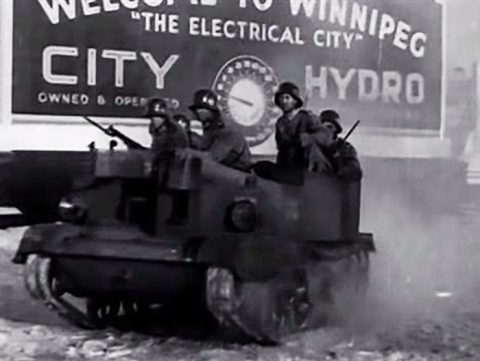
The event was pre-publicized in local newspapers and on radio shows and this publicity campaign even extended into northern Minnesota. Volunteers were enlisted to portray Nazi soldiers and officials using rented uniforms from Hollywood. This early fake news project took place on February 19 and was called “If Day” – a story that could appear in a Marvel “What If” comic or as a DC imaginary tale. You can see a related BBC video about it here. I guess it could even be seen as a Canadian version of Orson Welles’ War of the Worlds broadcast in 1938 but with troops on the ground.
If Day ended up raising well over 2 billion dollars nationwide for the war effort—well above quotas and even above expectations. In this way, it was a resounding success. I’m surprised we don’t know more about it today and that it never received any direct copy in the Canadian wartime comics of the day.
But getting back to comics in Canada at this time…. Bell Features was on the move and perhaps the biggest change for Bell during the spring of 1942 was to bring Adrian Dingle on board as its new Art Director, replacing Edmond Good. Dingle brought with him his Hillborough title Triumph Comics which featured the iconic female hero, Nelvana of the Northern Lights. In June, Bell put out Funny Comics which was a showcase for Manny Easson’s gag character, Dizzy Don. The strange thing about Manny Easson was that he always kept control of his Dizzy Don character and when he left Bell Features in the spring of 1946, he formed his own company, Dizzy Don Enterprises, which published two issues of Dizzy Don comics that continued the numbering from Bell’s Funny Comics title and he was also able to get some American distribution of the Dizzy Don character through F. E. Howard publishers. Bell’s seventh and final series title, Commando Comics, came out in October and it was Canada’s first purely war comic.
October also saw the establishment of Canada’s fourth major publisher, Educational Projects, in Montreal under the direction of Harry Halperin and his wife Rose. Its main title was Canadian Heroes Comics which was intended to provide Canadian kids with noble and edifying comic stories about Canada’s history, its armed forces, its institutions, such as the RCMP, famous Canadians, and so on. It also introduced a significant fictional Canadian costumed hero in the form of Canada Jack in its fifth issue. Sure, his “costume” was just a souped-up gymnastics outfit with a sort of half-maple leaf on the chest, but he did fight the fifth column on the home front.
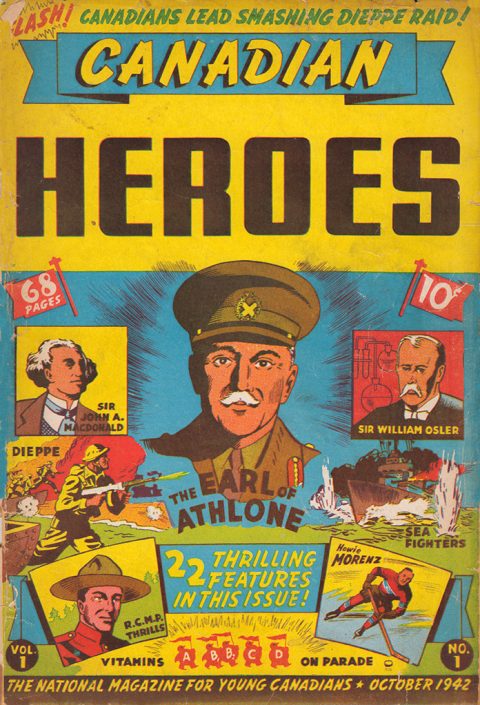
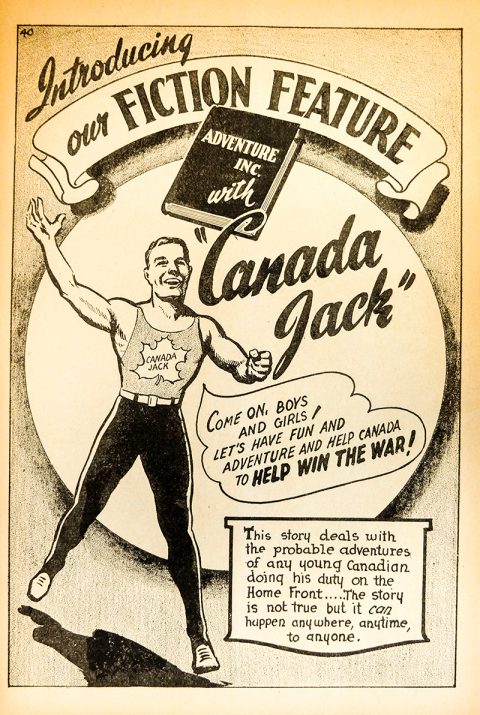
In 1942, Bell Features was probably the most dynamic of the publishers in terms of creating new superhero content. Anglo-American roped in Fawcett’s American characters, Maple Leaf hung on to its main superhero, The Iron Man, in Better Comics and had just introduced its new costumed hero, Cosmo Grant in Name-It Comics at the end of 1941 (this title, of course, changed its name to Rocket Comics with the second issue which had the cover date of Jan.-Feb. 1942 with Cosmo blazing across the cover and over the deck of a German battleship).
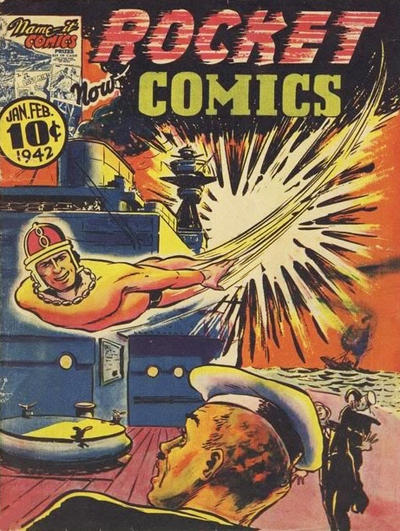
First, I think we should include Cosmo, even though his cover date first appearance is just before the start of 1942. Equally, I think we should include Sergeant Canuck who, like Cosmo, had his first appearance just before the start of 1942 in the inaugural issue of Bing Bang Comics (Nov.-Dec. 1941). Cosmo Grant is a scientist on the west coast of Canada who uses formulas left to him by his father, in his words, “… for the benefit of our glorious Empire.” Created by a member of the BC Provincial Police named Percy Hereward Brown, who went by the name Spike Brown in Maple Leaf Comics. He also created Sergeant Canuck
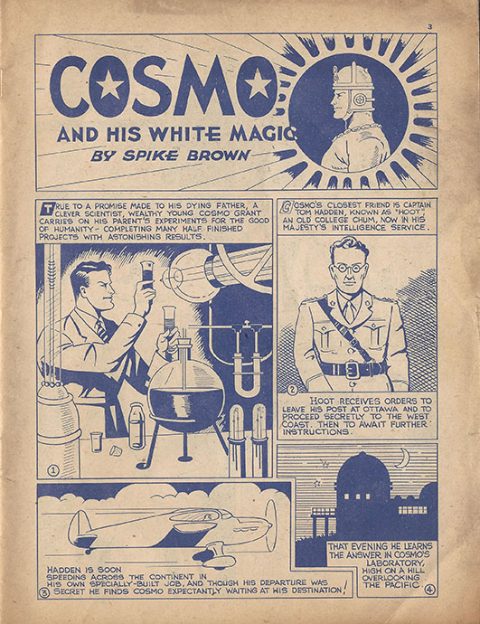
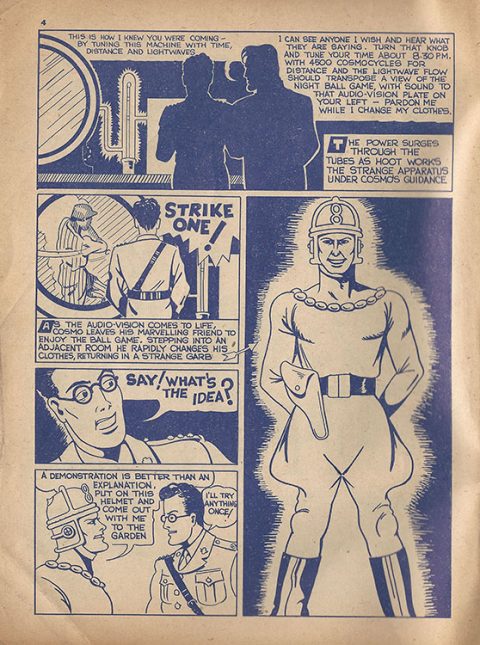
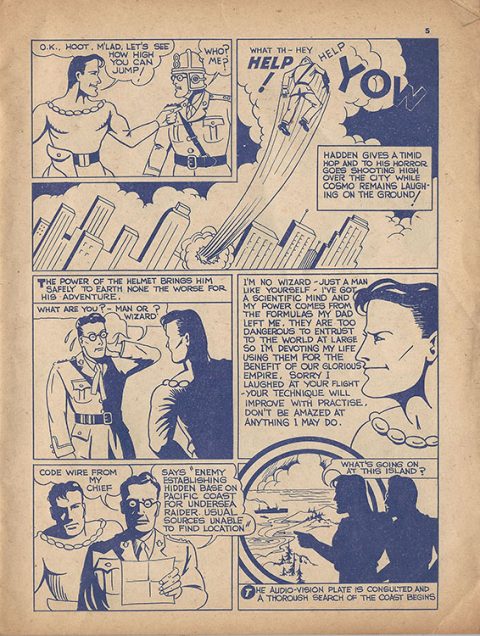
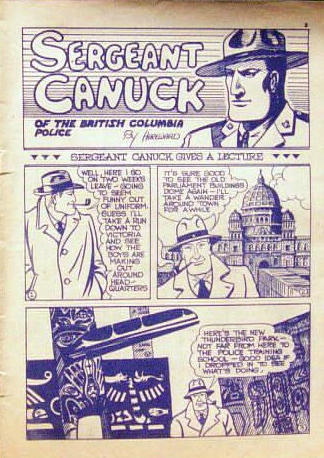
If we don’t count Anglo-American’s introduction of Fawcett’s American characters to the Canadian comic book playing field, the main injection of costumed heroes into the Canadian scene came from Bell Features. Here are some of the leading examples:
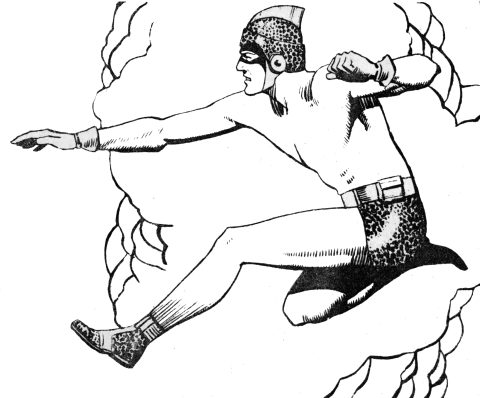
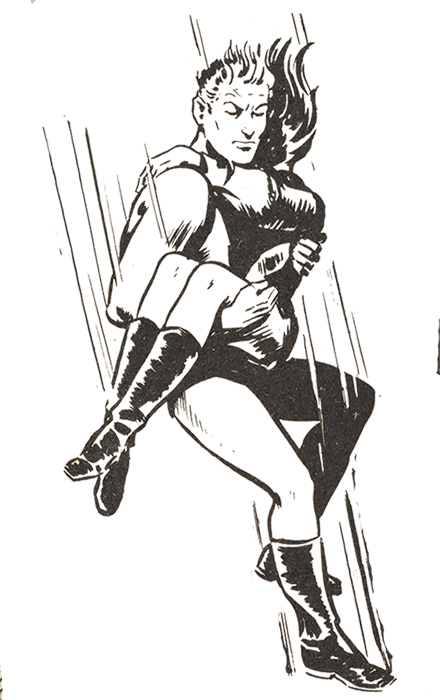
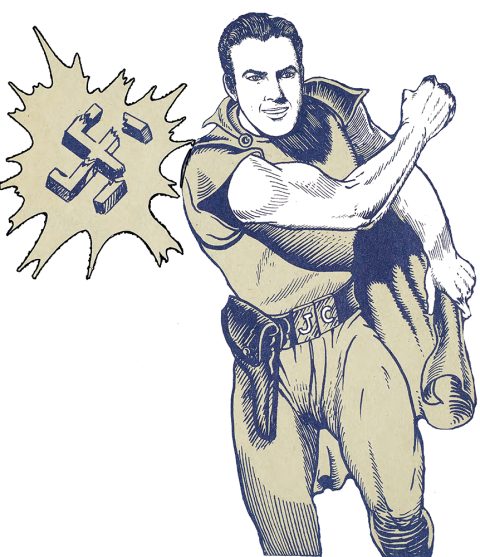
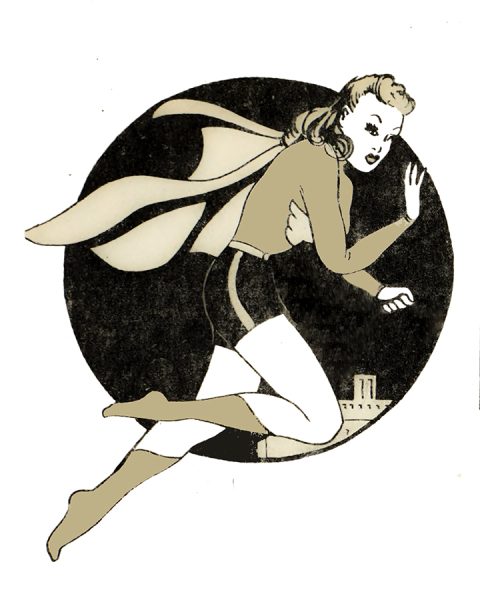
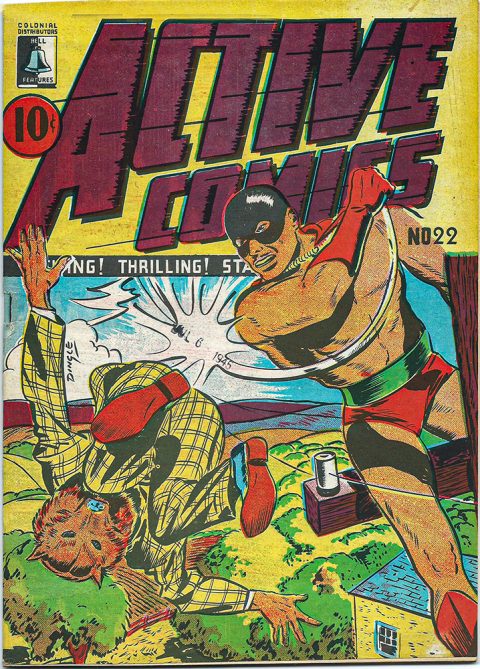
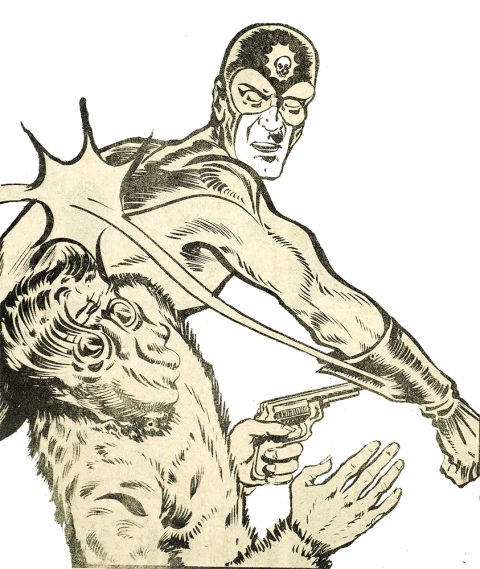
We should also mention Bert Bushell’s transformation of Ether Escapades’ Phil Dauntless into The Black Wing towards the end of the year in Maple Leaf’s Lucky Comics Vol. 1 No. 10 (Oct./Nov. 1942).
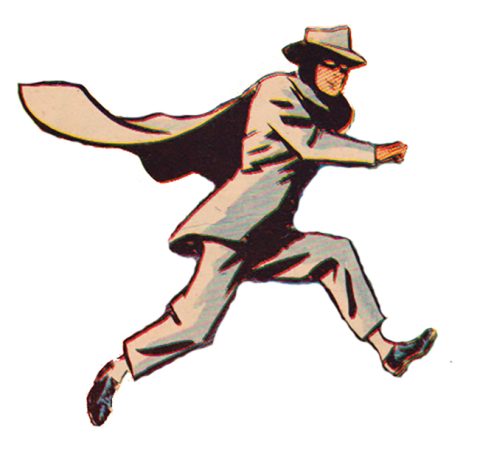
1941 gave us the big bang start of Canadian comics in Toronto and Vancouver followed by exploratory steps in the direction of costumed heroes such as The Iron Man, Freelance, and Nelvana of the Northern Lights. 1942, mainly care of Bell Features’ new directions and Anglo-American’s established Fawcett imports, saw an explosion in this genre. It was a memorable year in Canadian comics.
NEWS
I’ve just learned that the Canadian Warplane Heritage Museum wants to extend my exhibit of Canadian wartime comics past the end of November till the end of February. I hope that this means the museum was getting favourable feedback on the exhibit. I’m glad the word about our old wartime Canadian comics can keep in the eye of the public for a little longer.
Work on the WECA Comics Photo-Journal is progressing well. With the help of a number of generous collectors (including Walter Durajlija, Jim Finlay, Stephen Lipson, Robert Macmillan, and Kirk Wallace), I’ve managed to get hi-res (300 dpi) scans of 98% of the known wartime comics but I still need the following 14 books:
- Grand Slam Comics Vol. 2 No. 3
- Lucky Comics No. 33
- Robin Hood Comics Vol. 1 No. 4
- Rocket Comics Vol. 4 No. 30
- Spy Smasher Vol. 1 No. 5
- Spy Smasher Vol. 2 No. 2
- Spy Smasher Vol. 2 No. 5
- Spy Smasher Vol. 2 No. 6
- Spy Smasher Vol. 2 No. 8
- Spy Smasher Vol. 4 No. 11
- Three Aces Comics Vol. 1 No. 11
- Three Ring Comics No. 2
- Whiz Comics Vol. 1 No. 2
- Jinx Comics (coverless) nn
RAID Studio will be handling the crowdfunding, which should start early in the new year, and we hope to have the book out by the summer. Talk with RAID is of also putting out a new, re-designed edition of my Heroes of the Home Front (with maybe a new section or two) and paring both in a special slip-cased edition. I’m excited to see how things will unfold.
Last, I want to share a minor mystery solved involving a FECA comic cover. Remember the FECA books are those Canadian comics that were mainly reprints of American material that existed from about 1947 to the mid-1950s. Canada brought about a new ban on American comics in 1947 because of the sagging post-war economy, but this time they allowed American companies to send materials over the border which would allow Canadian publishers to reprint American comics. Trouble is, they seldom reprinted American books exactly like the originals. Canadian comics were generally shorter (36 pages plus covers) rather than the American books (48 pages plus covers) and had to leave out a story from the original.
By far, the most interesting of the FECA books were what we call the hybrids. These reprints of American comics used splashes from American comics to make the central cover image, or used covers from issues other than the ones originally attached to the contents. These hybrid books were often given a new title altogether. It’s always fun to find a FECA hybrid in the wild. It’s even more fun when you uncover the source for one of these hybrid cover images and for the contents inside.
The book I want to talk about is not a comic book proper, but a cartoon gag book called “Pin up Cartoons” with a cover price of 25 cents. The central cover image was of a twirling young lady dancing above a globe with champagne bubbles all around. It was a compelling image and I always wondered if it had been drawn by a Canadian artist or was taken from an American comic.
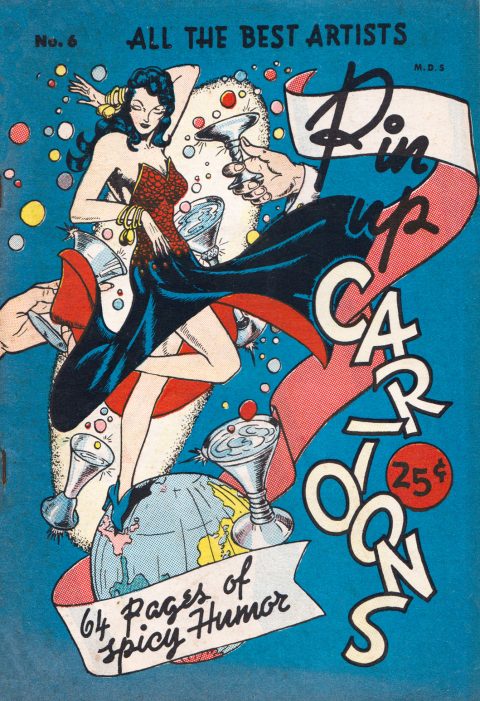
I recently acquired a copy of the FECA hybrid titled “Moon-Glow Trail” No. 5 which sported the cover image from the American copy of Flaming Love No. 5.
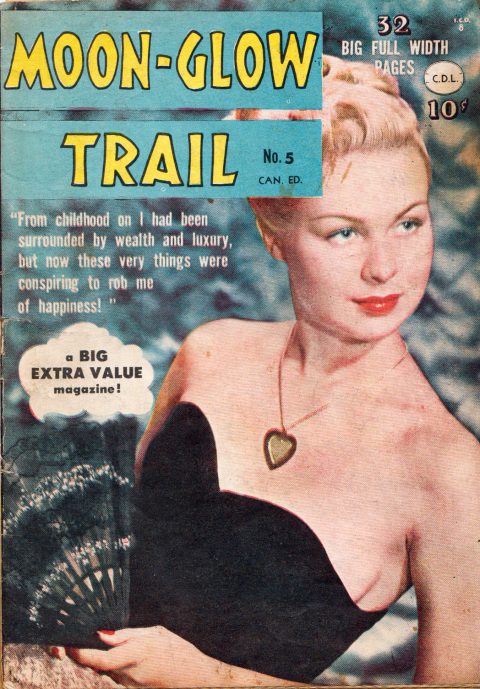
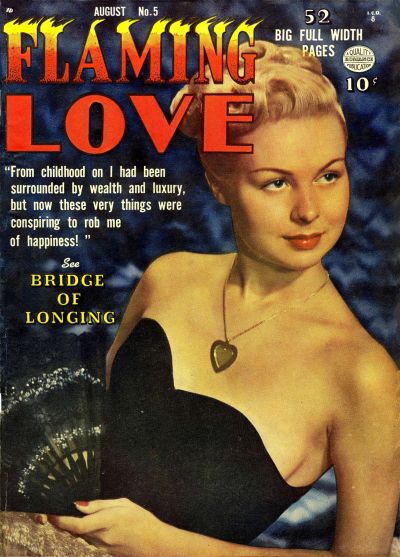
When I opened up the book (which, incidentally, had another common marker of FECA comics–blank inside covers) I saw the source of the “Pin-up Cartoons” cover image on the first splash page. The interesting thing is that, though the cover image for Moon-Glow Trail No. 5 was taken from the American Flaming Love No. 5, the interior of Moon-Glow No. 5, including that first splash, is taken from the American Flaming Love No. 4.
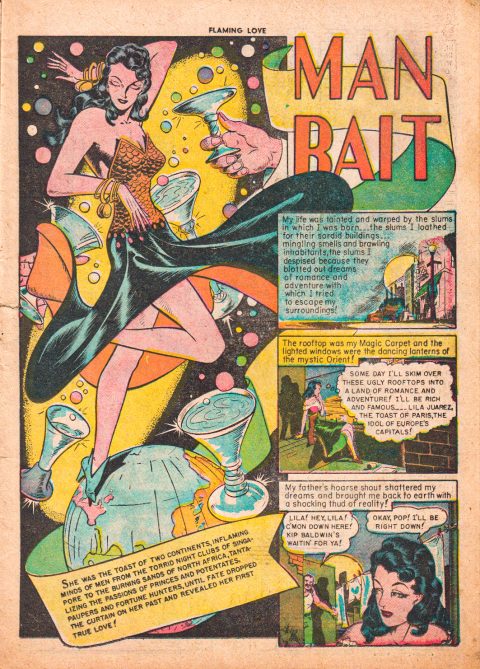
This is a typical case of how these Canadian FECA hybrids were often strange ‘mash-ups’ of American books with little logic to them other than the whims of a Canadian editor. At least, a decade-long mystery for me was solved!
Eventually, we do need to produce some sort of index to these FECA hybrids that is thoroughly cross-referenced to the American sources and an enterprising young researcher to take this task on.



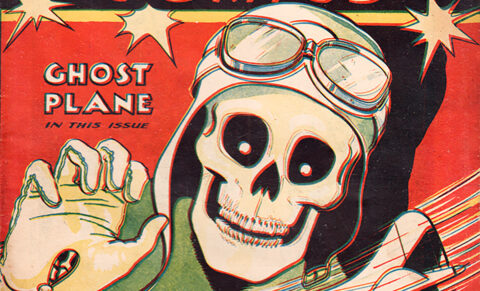
More FECA!
Intriguing article, as always, Ivan. Some thoughts/questions which arose during the reading (some of which will likely have obvious answers):
• Were Hillborough Studios debts primarily related to the lack of sales of their comics, or were there other Studio interests which added to their financial misery?
• Would the deal with Fawcett that allowed Canadian publishers to ‘redraw’ the American characters have allowed the Canadian writers/artists to include some of the newly-formed Canadian characters into the story arcs? My guess is no (because of copyright possession), but would it not be cool if there are some early stories where US and Canadian heroes interact within the same story?
• 2 ‘billion’ dollars raised in Winnipeg’s mock Nazi invasion? That amount sounds astronomical for the time. 2 million perhaps?
• How was the material shared between the United States and Canada for the FECA Hybrids? Silver plates?
Great Article Ivan!
BTW I have a copy of Three Aces Vol 1 # 11 that I can scan the front cover for you for the photo journal. 🙂
Scott, I’ll try to sprinkle future columns with more FECA comics info. Stephen I look forward to getting any more scans that may be useable for the Photo-Journal. Tim, I believe that Hillborough collapsed simply from Adrian Dingle’s debts that were not cancelled or overcome by sales of his comics. There were no other mitigating factors. Cy Bell was able to take care of Dingle’s debts when Dingle signed with Bell Features. Tim, the deal with Fawcett was that Canadian artists would simple redraw the stories from the Fawcett scripts that were sent up. No crossovers with Canadian heroes was allowed. In fact Fawcett sent photostat pages of head shots (profiles, full on, three-quarters, etc.) so that Canadian artists could paste these on the bodies they drew (Fawcett didn’t think Canadian artists could do justice to the the facial features of their characters). As for the 2 billion, here’s an excerpt from the Wikipedia entry: If Day raised $3.2 million for the Victory Loan campaign, which was the city’s largest single-day total.[30] Winnipeg passed its $24 million Victory Loan quota on 24 February, largely because of If Day.[31] The campaign’s provincial total was $60 million, well above its target quota of $45 million. It raised approximately $2 billion nationwide for the war effort, and If Day was considered one of the most successful fundraising events of the nationwide drive. Tim, I’m not exactly sure what was sent up from publishers in the States so that their comics could be reprinted during the FECA period. It must have been some form of mats or plates.
I read somewhere that the original US plates were copied in aluminum or asbestos [ !!!! ] to cut down on the weight. This would explain why so many Canadian reprints look so washed out- the plates only remain ‘fresh’ for so long & wear down quickly over the course of the production run. I was at a ‘Toronto Old Paper Show’ back in the nineties & saw a dealer with what looked to be the complete plates for an eight page story from STRANGE MYSTERIES [ Superior ]. They certainly looked aluminum to me, not that I am a metallurgist. He didn’t want all that much for them, but I did not buy them- what the heck would I do with these eight slabs of metal ???
I have seen the odd plate popping up here & there in my travels, but can only recall one other Canadian plate crossing my path & I think that that was at an Ontario College of Art con, back in the eighties.
The plates may have been zinc, that is also a possibility.
Scott: I’m hoping you are a Consummate Canadian FECA Comic Collector (4C’s Star) and have a pile more books to contribute, not just joking. If not , I’m just joking 😉
Stephen: I think you might have a few more in Ivan’s Need list, from what I recall, and hopefully we are all contributing and then selling to a rising tide for us old collectors.
Yes Jim I have Lucky Comics # 33 as well as Rocket Comics Vol 4 # 30 as well 🙂
Ivan:
Lovely work as always.
Over the holidays I will look for a mini-cassette tape I think I recorded when Bob McMillan and I interviewed Jean Johnston over her work re-drawing those American comics. She was a teenager and did not want to work for Grip ? Had graduated from a fine arts high school.
Bob was very much up to speed with his questions.
m.